Out of this world: Astronomy Photographer of the Year 2016 winners
Award-winning photographers capture the quiet, majestic beauty of the night sky.
Chinese photographer Yu Jun has beaten thousands of amateur and professional photographers from around the world to win the title of Insight Astronomy Photographer of the Year 2016. As well as securing the £10,000 top prize, his image takes pride of place in an exhibition of winning photographs opening at the Royal Observatory Greenwich on 17 September 2016.
The judges chose Jun's image illustrating the phenomenon of Baily's Beads during a total solar eclipse on 9 March 2016. Made up of several stacked images, the camera reveals what is usually hidden from the naked eye, illustrating the uneven surface of the moon, as beads of sunlight seep from behind the dark lunar disc. Competition judge and Royal Observatory Public Astronomer, Dr Marek Kukula said: "This is such a visually striking image, with its succession of fiery arcs all perfectly balanced around the pitch black circle of totality."
Our Sun winner and overall Astronomy Photographer of the Year winner: Baily's Beads by Yu Jun (China): "The Baily's beads effect is a feature of total solar eclipses. As the moon 'grazes' by the Sun during a solar eclipse, the rugged lunar limb topography allows beads of sunlight to shine through in some places, and not in others. I took a series of photos of the total solar eclipse of 2016, in Luwuk Indonesia, and stacked them to show the effect." Canon EOS 5D Mark II camera, Sigma DG OS HSM 150-600 mm f/5–f/6.3 lens at 600 mm f/10, ISO 100, multiple 1/1600-second exposures
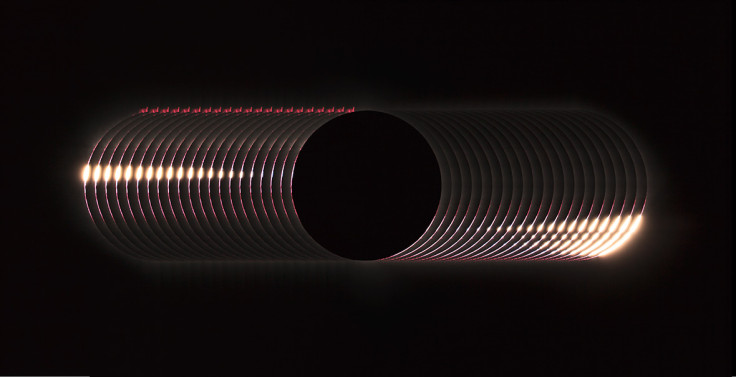
Our Sun runner-up: Sun Flower Corona by Catalin Beldea and Alson Wong (Romania; USA): "This image is a composite of 12 photos taken during the total solar eclipse observed in Indonesia, 9 March 2016. You can clearly see the coronal structures. I managed to photograph the eclipse from Tidore Island, Indonesia, after a last-minute boat escape from clouds." Photography: Catalin Beldea, Processing: Alson Wong. CFF Telescopes 80 mm f/6 oil-spaced triplet apochromatic refractor telescope, Astrotrac mount, Nikon D7200 camera, ISO 100, multiple 1/2-second–1/2000-second exposures

Our Sun highly commended: Huge Filaprom by Gabriel Octavian Corban (Romania): "The image shows a very large filaprom: a prominence partially seen over the Sun's disk as a filament. One could fit about 150 Earths side by side along its length. Unfortunately the camera field of view was to small to completely cover the extent of the filament." Sky-Watcher Equinox ED120 Doublet refractor telescope, Sky-Watcher NEQ6. Pro mount, Pt Grey Grasshopper GS3-U3-23S6M-C camera, 3780 mm f/31.5 lens, Daystar Quark H-alpha filter, multiple 3.2-second exposures

Aurorae winner: Twilight Aurora by György Soponyai (Hungary): "On the evening of a total solar eclipse in Spitsbergen, around 21:30, a very impressive Aurora Borealis was visible. At that time the Sun was shining 9 degrees below the horizon – it was nautical twilight then at the shore of Greenland Sea. The Adventtoppen mountain is illuminated by the Western-Northwestern horizon from the back, the difference of brightness of the mountain sides is obvious. The foreground is painted orange by the lights of the nearby Longyearbyen Airport." Canon EOS 5D Mark II camera, 24 mm lens, ISO 320, 6-second exposure.

Aurorae runner-up: Black and White Aurora by Kolbein Svensson (Norway): "This shot is from 7 October 2015 – the best aurora night ever. I have for a long time tried to capture an image that also works in black and white. This is my best so far. The lines and the mountain-peak I feel work really well with no colours. I usually feel that the magic of auroras is the colours, but here I really like the lack of the same." Nikon D750 camera, 14 mm f/2.8 lens, ISO 1600, 16-second exposure.
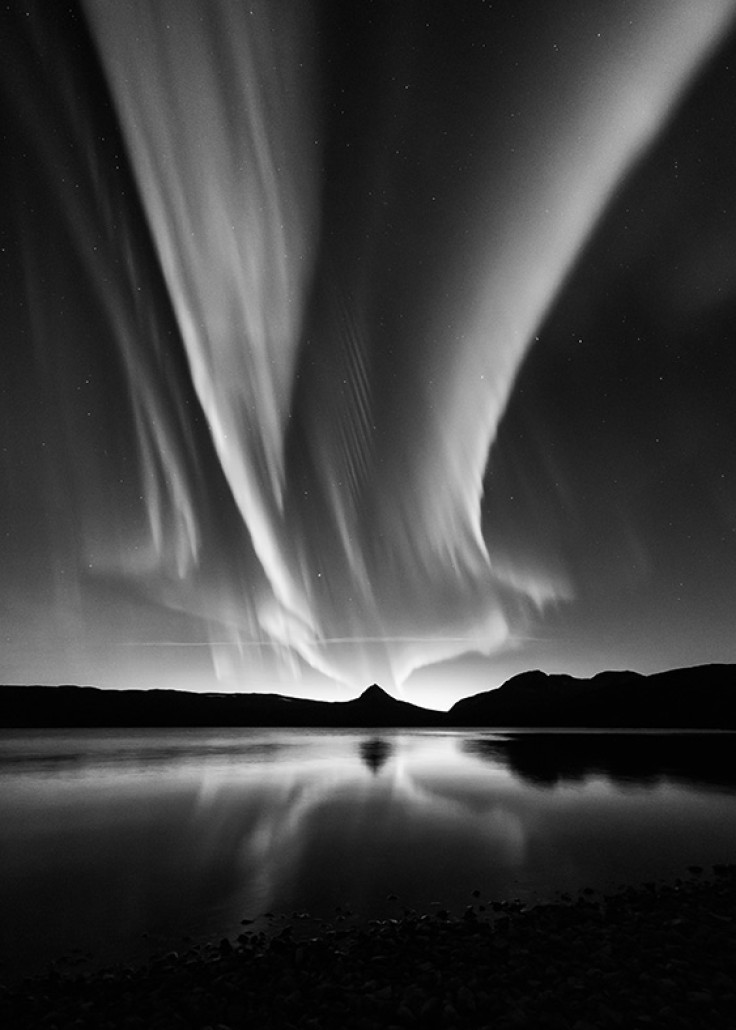
Aurorae highly commended: Corona by Bernt Olsen (Norway): "A northern lights corona outburst taken on 15 March 2015, with the big dipper in the centre. Image processed in Lightroom with just an touch of clarity, otherwise straight out of the camera. Image taken at Sommarøya, just a couple of miles outside the city of Tromsö, Norway." Nikon D800 camera, Nikkor 14–24 mm f/2.8 lens, ISO 3200, 3-second exposure.
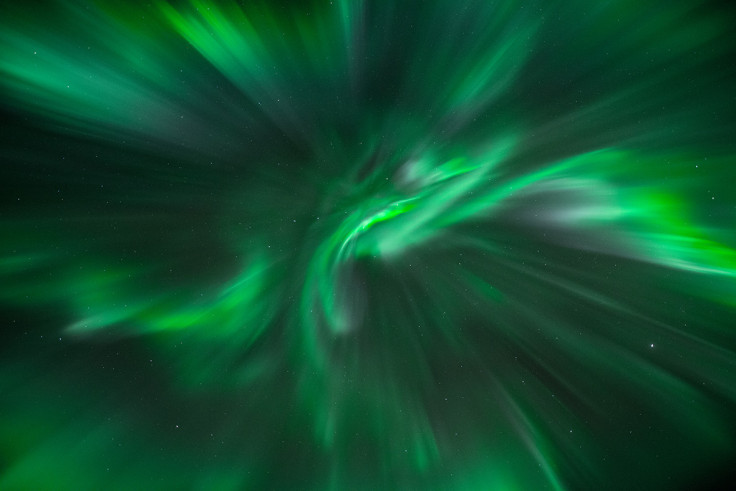
People & Space winner: City Lights by Wing Ka Ho (Hong Kong): "In Hong Kong, the urban streets and buildings are dotted with countless light pipes and huge neon signs which cause serious light pollution. When this city falls asleep at night, only a few stars can be seen regularly in urban areas, and only on the clearest evenings." Canon EOS 6D camera, 24 mm f/8 lens, ISO 400, 10-second exposure.

People & Space runner-up: Man on the Moon by Dani Caxete (Spain): "Really complicated picture, with a good friend helping by posing on top of a mountain called Peña Muñana in Cadalso de los Vidrios, Madrid. The hardest part was getting to the location and discovering that he had forgotten the tripod at home. A coat on a fence served to improvise and support my telescope and camera." Long Perng ED80 f/6.2 telescope, Nikon D610 camera, ISO 1250, 1/320-second exposure.
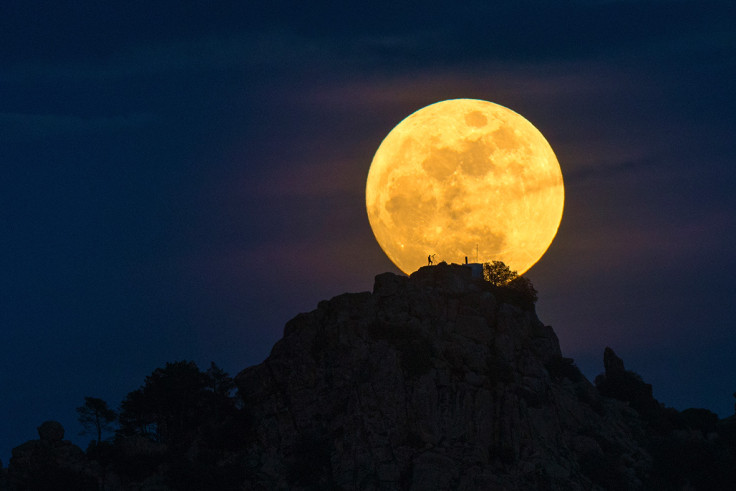
People & Space highly commended: A Wise Son Makes a Glad Father by Robin Stuart (Kenya): "A Maasai warrior teaches his son about the stars, as they enjoy the vastness of space together. The Maasai are semi-nomadic, using the stars to navigate across the east African plains in search of new grazing grounds for their livestock. At a young age, young Maasai must learn how to become a man and warrior. Insights and wisdom are passed down the generations, so my goal was to capture on camera the moment a father passed down his knowledge of the stars to his son, using the Milky Way and the setting of their semi-permanent hut as compositional elements. That was the grand plan: in reality, when I visited a Manyata (Maasai home) and sought out the perfect spot for the shot I'd planned, it just happened to be completely covered in dried up cow excrement. It was a novel experience, lying in the dung with my camera, but as the image shows, a fruitful one. I feel privileged to have met the Maasai in their home — and happy I was able to capture a rare moment before their rich culture begins to fade away." Canon EOS 5D Mark III camera, 14 mm f/2.8 lens, ISO 4000, 30-second exposure.

Skyscapes winner: Binary Haze by Ainsley Bennett (UK): "On this particular morning in October I knew the Moon, Venus, Mars and Jupiter were in close conjunction. I got up during the early hours before work and headed to an area of countryside that I thought would offer a suitable composition. On arrival there was a thick layer of low lying mist at the bottom of the gently sloping field that at first I thought would hamper my images but to my surprise the mist added a new dimension by accentuating the brightness of the crescent moon and Venus, making them look like glowing spheres. The resultant image looked like something from a science fiction movie with binary stars rising from the horizon of an unknown planet. I liked the way the two trees framed the bright objects in the early morning sky and the subtle pastel tones of the image." Taken in Ashey, Isle of Wight. Nikon D800 camera, 24 mm f/2.2 lens, ISO 1600, 20-second exposure.
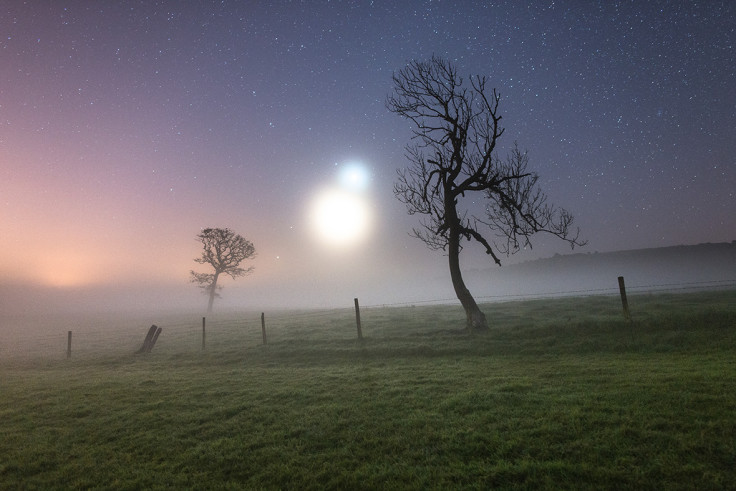
Skyscapes runner-up: Silent Waves of the Sky — Noctilucent Clouds by Mikko Silvola (Finland): "I have never seen such strong noctilucent clouds. In the upper atmosphere, about 80-85km high, small crystals of ice glow in the summer night. A memorable night watching the waves in the sky that look like white northern lights of summer." Canon EOS 6D camera, 300 mm f/3.5 lens, ISO 2000, 16-second exposure.
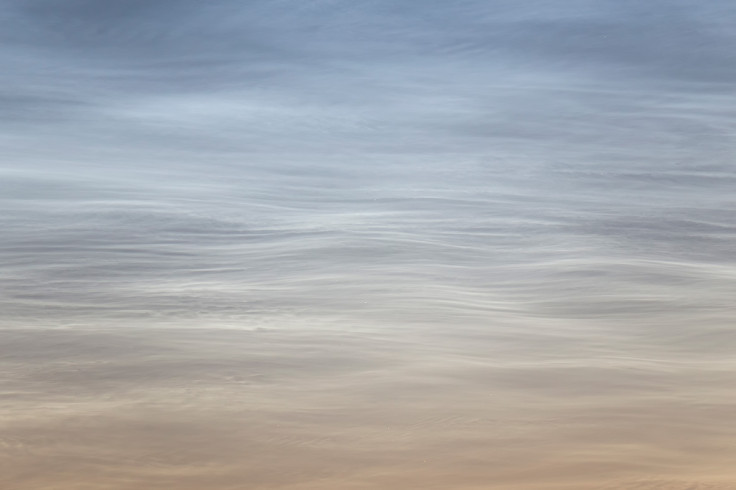
Skyscapes highly commended: Geminids over the LAMOST Telescope by Yu Jun (China): "Space dust from Asteroid 3200 Phaethon rained into the Earth's atmosphere, and burnt as meteors at about 100km above Xinglong Station of National Astronomical Observatories of China, piercing the night sky over the Guoshoujing LAMOST telescope. All the meteors seemed to radiate from the same point, which lies at Gemini, and that's how the meteor shower gets its name. Over 100 meteors were captured in the composite image taken on the peak night of the 2015 Geminid meteor shower, and the brightest bolide even briefly lit up the landscape." Canon EOS 6D camera, EF 24m f/1.4L II USM lens, ISO 12800, multiple 8-second exposures.
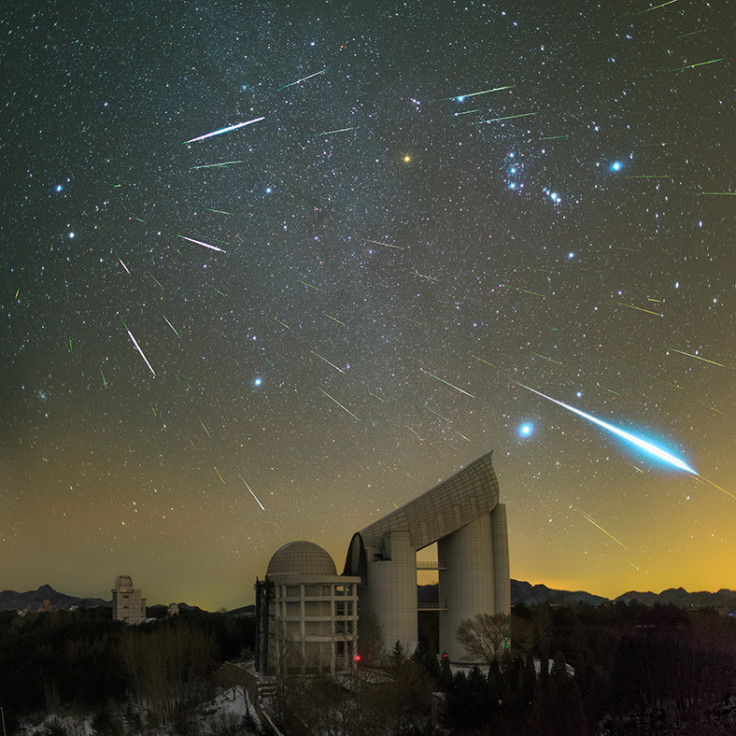
Our Moon winner: From Maurolycus to Moretus by Jordi Delpeix Borrell (Spain): "This is the Moon of our dreams: Craters overlap, butt against each other, and extend to the horizon. As we can see in this lunar landscape, the southern region of our Moon always offers us amazing views.In this image we can see a lot of big and spectacular impact craters, like Barocius, Baco, Cuvier, Lillius and Jacobi." Captured from L'Ametlla del Vallès, Barcelona, Spain. Celestron 14-inch telescope, SkyWatcher NEQ6 Pro mount, ZWO ASI 120mm camera, stacked 500 of 3600 frames.

Our Moon runner-up: Rise Lunation by Katherine Young (Sweden): "There is little clarity through the atmospherics that can intensify horizons – to portray it as such would be unnatural. As the Moon emerges, I relish the ripples and surprising shimmers – it extends and reaches through its seeming climb out of this world." Captured in Serramazzoni, Emilia-Romagna, Italy. Canon PowerShot SX50 HS camera, 215 mm f/6.5 lens, ISO 400, 1/2-second exposure.
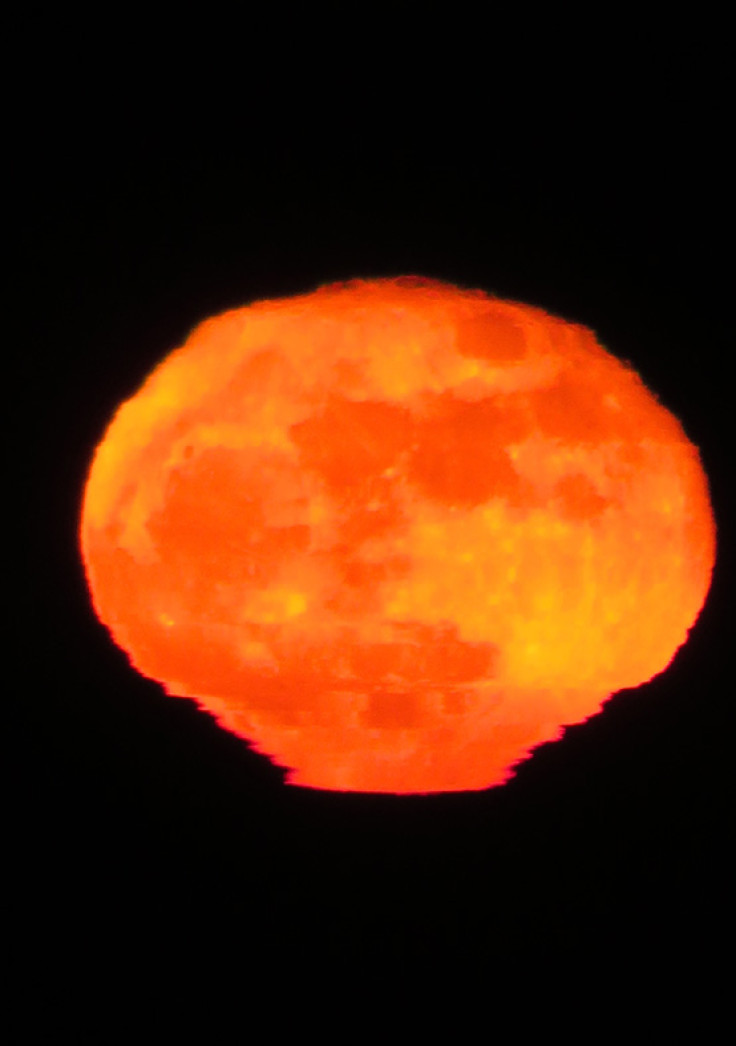
Our Moon highly commended: Moonrise at the Pier by Sergio Garcia (Mexico): "This is an eight-image panorama of the full moon rising over the Galveston Island Pleasure Pier in Texas. A cold front moved in and the sky was particularly clear, so I looked for the location where the moon would rise and planned for taking these shots when the moon looked larger due to the distortion by the Earth's atmosphere." Nikon D750 camera, 600 mm f/6.3 lens, ISO 800, 1/80-second exposure.
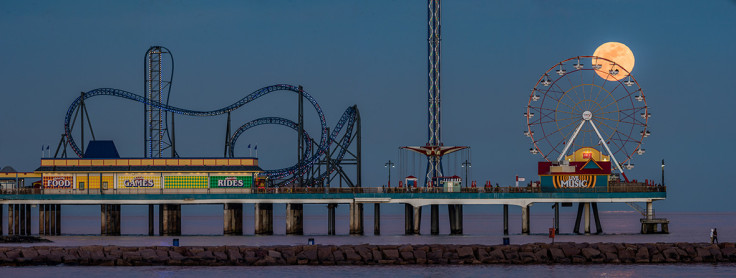
Stars & Nebulae winner: The Rainbow Star by Steve Brown (UK): "Whenever I see Sirius in the night sky I always take a moment to enjoy the rapid cycle of colours it displays, especially when close to the horizon. Not for nothing is Sirius called the 'Rainbow Star', as the twinkling of the star seems to go through every colour of the rainbow. Ever since I took up astrophotography I have been searching for the best way to show these colours in a photograph. After thinking about the best way of doing this, and some experimentation, I finally hit upon the idea of videoing the star deliberately out of focus. By doing this the light from Sirius was spread out over a larger area, which resulted in the colours it displayed being more obvious. Also, video is essentially a way of taking many images very quickly, providing the best chance of capturing each flash of colour as it occurred. To create the final picture, I picked out the video frames that contained the most striking colours and put them together in this composite image." Captured from Stokesley, North Yorkshire. Canon EOS 600D camera with Star Adventurer tracking mount, 250 mm lens, ISO 3200, stacked 70 of 1500 frames.

Stars & Nebulae runner-up: Perseus Molecular Cloud by Pavel Pech (Czech Republic): "This image shows a large amount of interesting deep sky objects at the edge of Aries and Perseus constellation." This was taken over six nights from Šumava National Park, Czech Republic. ASA 10-inch Newtonian telescope, Gemini 53F mount, Moravian Instruments G3-11000 CCD camera, f/3.6 reducer, 120 x 6-minute exposures.
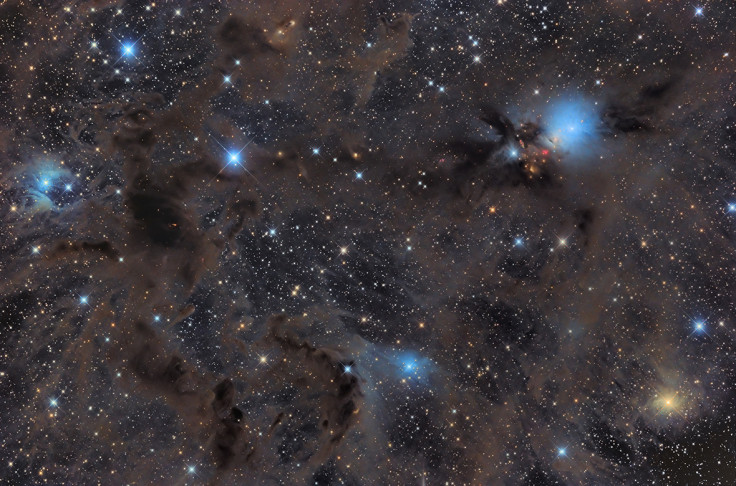
Stars & Nebulae highly commended: Starlight and Silhouettes by Tom O'Donoghue (Ireland): "This is a mosaic of 36 panes, showcasing the summer skies from the Northern Hemisphere. Parts of the constellations Sagittarius, Scutum, Serpens, and Ophiuchus can be seen in this image. Many of the well known bright Messier Nebulae, such as the Lagoon, Trifid, Eagle, and Swan can be seen, as well as an array of Barnard Dark Nebulae. The image also has various Open and Globular clusters, while the more difficult to find Planetary Nebulae, and even bright Red Carbon stars lurk in the background. This image was taken over four years, and totals 110 hours, 57 of which were taken in 2015 using a triple telescope system." Captured in Etoile St Cyrice, Provence-Alpes-Côte d'Azur. Takahashi FSQ-106N f/5 refractor telescope, Takahashi EM-200 mount, Atik 11000 CCD camera, 110-hour total exposure.

Planets, Comets & Asteroids winner: Serene Saturn by Damian Peach (UK): "Near perfect conditions prevailed for this session imaging Saturn toward sunrise on 18 March 2016 from Marley Vale, Barbados. Fine details are captured across the globe and ring system which is near is maximum tilt toward us. A variety of coloured bands and zones are seen within the atmosphere, along with various small storms. Breathtaking views through the telescope – so much so I was still observing when the sun had risen." Celestron C14 telescope, Celestron CI-700 mount, ASI 174MM camera, multiple channels, multiple 0.07-second exposures.
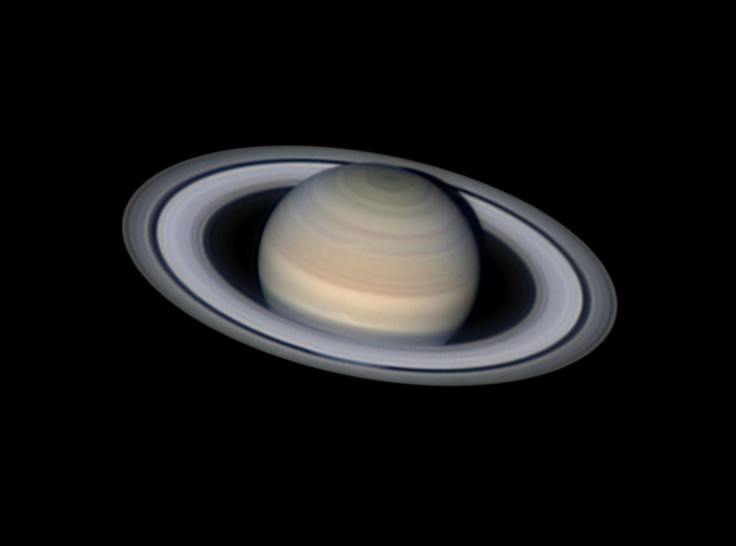
Planets, Comets & Asteroids runner-up: Comet Catalina by Gerald Rhemann (Austria): "The solar wind caused very spectacular tail features and several disconnection events. The most serious problems are the very fast comet and the very fast comet structures. To capture a sharp comet image, and not a trailed starfield one, is very tricky." Captured from Jauerling, Lower Austria, Austria. ASA Astrograph 8-inch f/2.9 telescope, ASA DDM-60 mount, FLI PL 16803 camera, multiple channels, 1.18-hour total exposure.
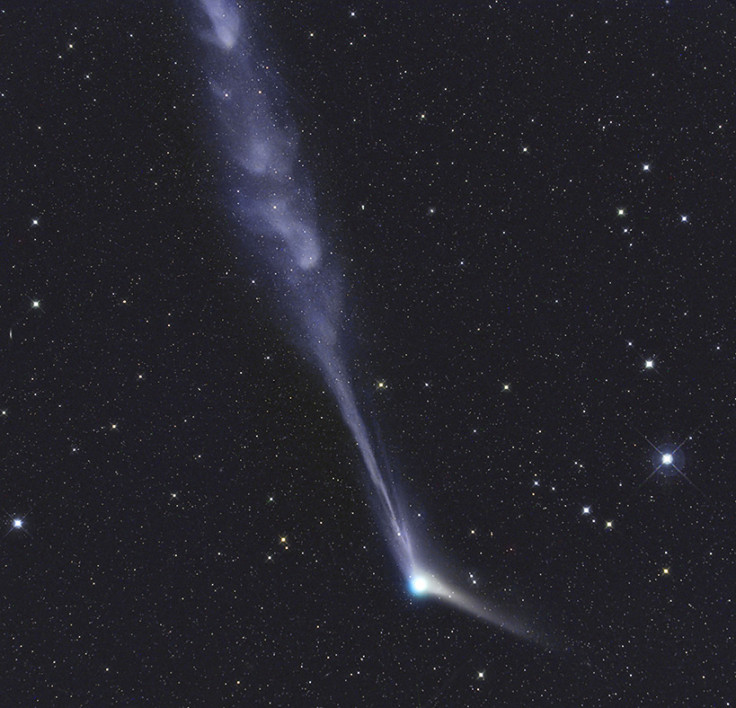
Planets, Comets & Asteroids highly commended: King of the Planets by Damian Peach (UK): "Jupiter on 18 March 2016 from Marley Vale, Barbados. A wealth of storm activity is visible across the face of the solar system's largest planet in this view obtained close to opposition. The Great Red Spot is well placed, showing a deep orange colour – the most colourful it has appeared in many years. Conditions were close to perfect for this session. I clearly remember exclaiming 'Wow!' on focusing the live camera feed." Celestron C14 telescope, Celestron CI-700 mount, ZWO Optical ASI 174MM camera, multiple channels.

Galaxies winner: M94: Deep Space Halo by Nicolas Outters (France): "This galaxy is very nice with a halo. The process was very difficult to do and the challenge was to show all the small galaxies in the background." Captured from Castor Sirene Observatory, Provence-Alpes-Côte d'Azur, France. RCOS 12.5-inch f/9 telescope, Paramount ME mount, Apogee Alta 16U 16803 camera, 48 x 20-minute exposures.

Galaxies runner-up: Towards the Small Magellanic Cloud by Ignacio Diaz Bobillo (Argentina): "This image shows our neighbouring galaxy, the Small Magellanic Cloud, and globular cluster 47 Tucanae, in visible light. Instead of using a relatively short focal length to cover this field, I stitched together a three-pane mosaic which allowed me to attain a high resolution through the field. As a result, an immense amount of stars are well resolved, revealing a number of far-away star clusters scattered through the dwarf galaxy. In fact, the software I used counted over 120,000 stars, the largest number I have ever encountered in my work." captured from San Antonio de Areco, Buenos Aires Province, Argentina. Astro-Physics 130 f/5 Gran Turismo telescope, Losmandy G11 mount, Canon EOS 6D camera, ISO 800, multiple channels, five-hour total exposure.

Galaxies highly commended: Antlia Galaxy Cluster: Extreme Deep Field, 152 Hours by Rolf Wahl Olsen (Denmark): "I am delighted to present the deepest view ever obtained of the Antlia Galaxy Cluster, and likely the longest exposure ever reached by an amateur. Over the course of six months from January to June 2015 I used my homebuilt 12.5 inch Serrurier Truss Newtonian telescope to collect 152 hours of data on this magnificent and rarely imaged Southern galaxy cluster. I specifically wanted to obtain an extremely deep view of a galaxy cluster, but did not expect to uncover such a treasure trove of features in this one little patch of sky. The entire field of view appears bursting with action; ranging from the varied and colourful cluster members themselves to obscure ultra-faint dwarf galaxies, Intracluster Light and Integrated Flux Nebula, red filaments from an ancient supernova remnant and the vast number of deeply reddened distant galaxies littered across the background." Captured from home observatory, Auckland, New Zealand. Home-made 12.5-inch f/4 Serrurier Truss Newtonian telescope, Losmandy G11 mount, QSI 683wsg-8 camera, multiple channels, 152-hour total exposure.
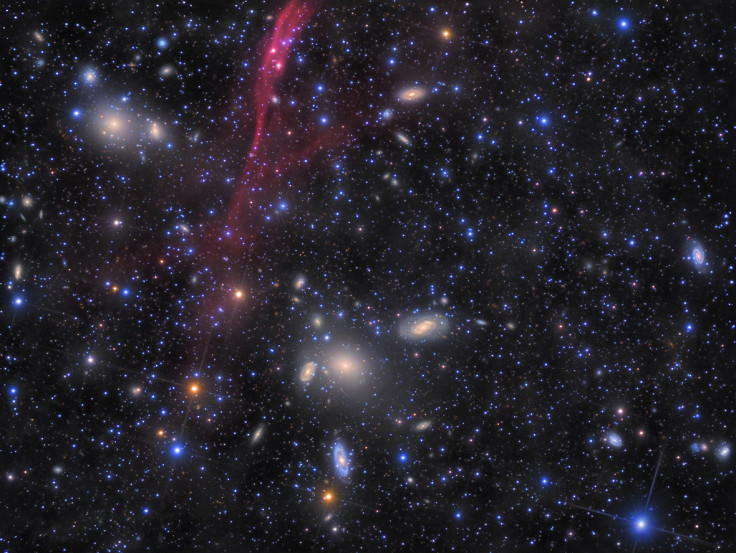
Sir Patrick Moore prize for best newcomer: Large Magellanic Cloud by Carlos Fairbairn (Brazil): "Photographic equipment and a portable EQ mount was basically what I used to do this image. The Large Magellanic Cloud is one of the jewels of the southern sky which can be seen with unaided eye. It's the Milky Way's satellite, lying about 14,000 light-years from us." Captured from Luziânia, Goiás, Brazil. Canon EOS 5D Mark III camera with SkyWatcher Star Adventurer mount, Canon 200 mm f/2.8 lens at f/4, ISO 6400, 1.5-hour total exposure.
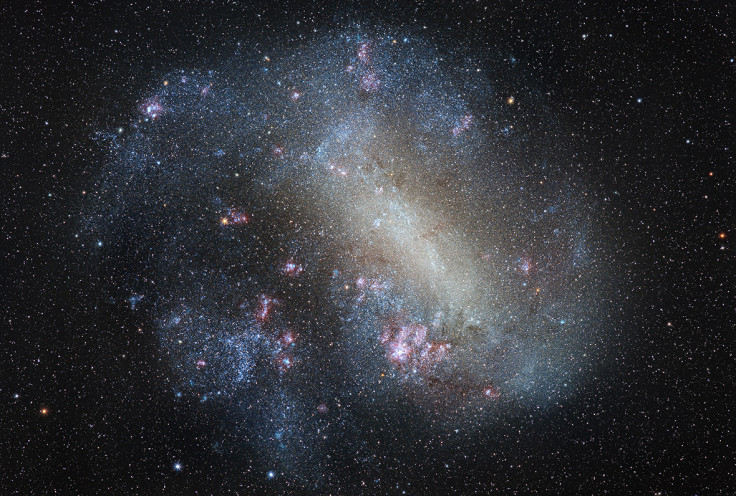
Young Astronomy Photographer of the Year winner: Lunar Reversal by Brendan Devine (USA – aged 15): "On a clear night last November, I set up my camera and 100-400mm lens on my front lawn. I honed the focus until the moon appeared perfectly sharp. Since I was not using a motorised mount, I only had a handful of seconds before the moon moved out of my frame. I put my 7D Mark II into continuous firing mode, and got off 70 frames in seven seconds. Taking the best 62 frames, I aligned and stacked them and then adjusted the wavelets to sharpen the image. I then imported the image in Photoshop to give it some final adjustments, and made the decision to invert it My image has lots of areas of high-contrast, which makes it a lot easier to pick out detail, especially in the craters. For example, veins and "splash marks" from the impacts of asteroids and meteorites are generally difficult to see, but can be easily observed around the crater Copernicus. Also, inverting it gives a 3-D effect to some areas, such as the Montes Apenninus, which generally look flat but appear to 'pop out' in my image." Captured from Chicago, Illinois. Canon 7D Mark II camera, Canon EF 100-400 mm f/4.5–f/5.6L IS II USM lens at 400 mm f/8, Manfrotto tripod, ISO 640, 62 x 1/800-second exposures.
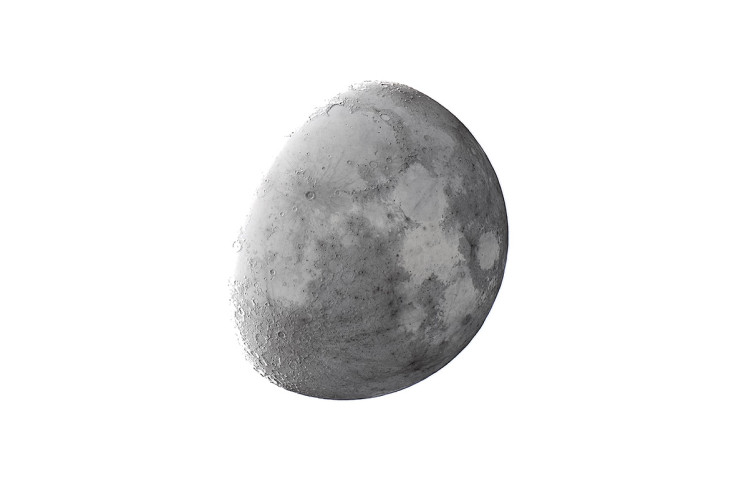
Young Astronomy Photographer of the Year runner-up: What the City Does Not Show You by Jasmin Villalobos (USA – aged 15): "This image shows the silhouette of a man standing on a hill stuck in between a sky filled with light pollution and the other filled with the visible desert night stars. I angled the camera towards a distant city which allowed for more glow in the sky, but also at an angle to where stars would be visible without being affected by light pollution." Captured from Canyon Lake, Arizona, USA. Canon EOS 1200D camera, 20 mm f/3.5 lens, ISO 3200, 30-second exposure.
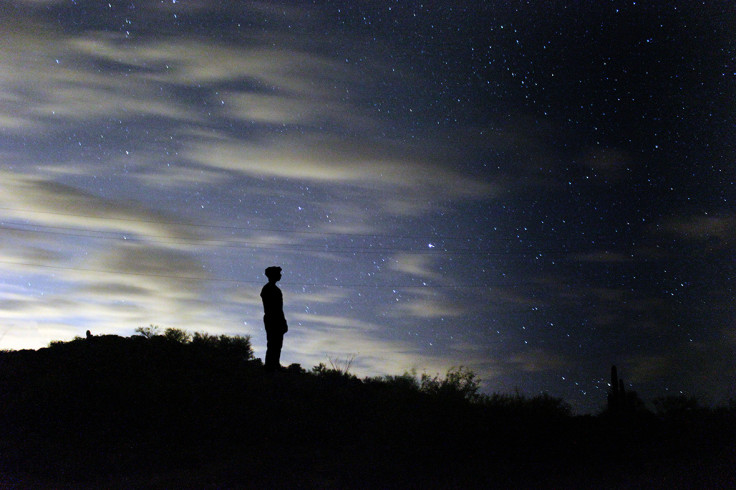
Young Astronomy Photographer of the Year highly commended: Jupiter by Olivia Williamson (UK – aged 12): "Jupiter taken from the British Embassy in Abu Dhabi on the night of 24 March 2016." Celestron C11 Schmidt Cassegrain telescope at f/25, SkyWatcher AZ-EQ6 GT mount, Imaging Source DMK 21AU618 camera, multiple channels, stacked exposures.
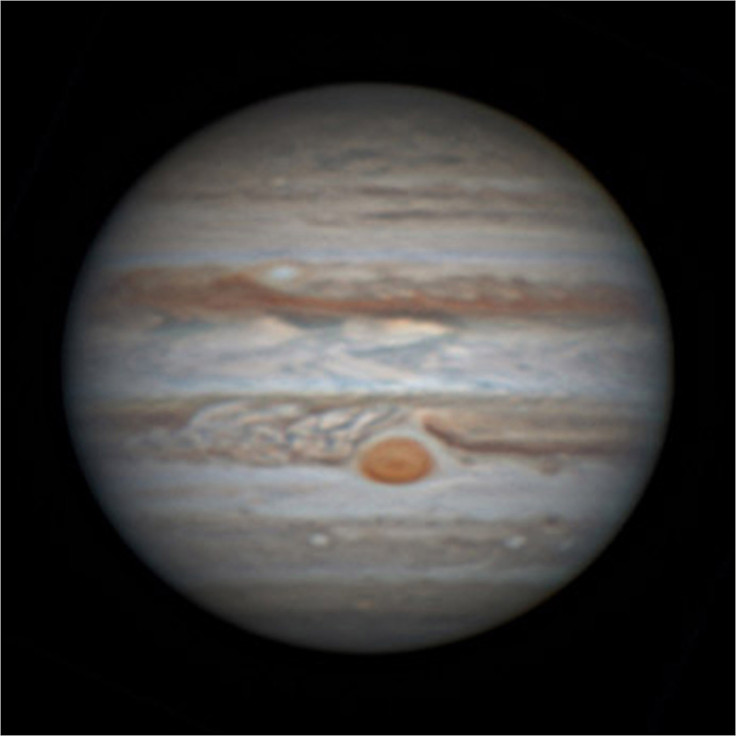
Young Astronomy Photographer of the Year highly commended: Northumbrian Aurora by Jonathan Farooqi (UK – aged 15): "I took this photo of the Aurora Borealis while stood on the beach at Cresswell, Northumberland on 6 March 2016. I had looked out of the window of our suburban house to be confronted by a magnificent display of the Aurora visible despite the light pollution and my mum was easily persuaded to drive us to the beach for a better look." Canon EOS 550D camera, 18 mm f/3.5 lens, ISO 1600, 8-second exposure.
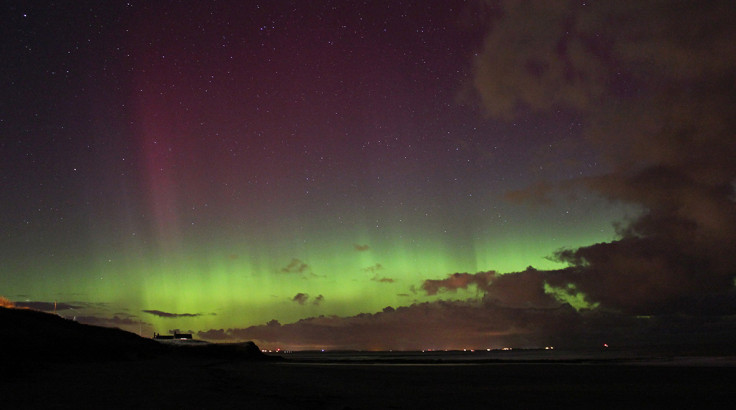
Young Astronomy Photographer of the Year highly commended: Just Missed the Bullseye by Scott Carnie-Bronca (Australia – aged 14): "While taking this star trail image, a bright flash slowly traversed the sky. I realised that it was the International Space Station, and that it was seemingly aiming for the south celestial pole. However, the photo didn't quite line up, creating the streak just below the centre." Captured from Harrogate, South Australia. Canon 70D camera, 17 mm f/5.6 lens, ISO 1600, 30-second exposure.

BBC Sky at Night Magazine's Editor Chris Bramley, who is a judge on the competition, said of this year's contest: "There were so many fantastic images this year. The winning entries, and indeed the whole field, show that the entrants' technical abilities and creative eye have never been sharper. They capture the quiet, majestic beauty of the night sky above a world that's increasingly frenetic and light-polluted."
Insight Astronomy Photographer of the Year is run by the Royal Observatory Greenwich in association with Insight Investment and BBC Sky at Night Magazine. Now in its eighth year, the competition received a record number of more than 4,500 entries from over 80 countries. The best of these exceptional photographs are showcased in a free exhibition in the Royal Observatory's Astronomy Centre which is open to the public from 17 September 2016 until 28 June 2017. Winners and shortlisted entries will also be published in the competition's official book by Collins, available exclusively in the Royal Observatory Greenwich shop from 17 September and on sale across all bookstores and online from 3 November, priced at £25. For information about entering next year's competition visit www.rmg.co.uk/astrophoto.
© Copyright IBTimes 2024. All rights reserved.






